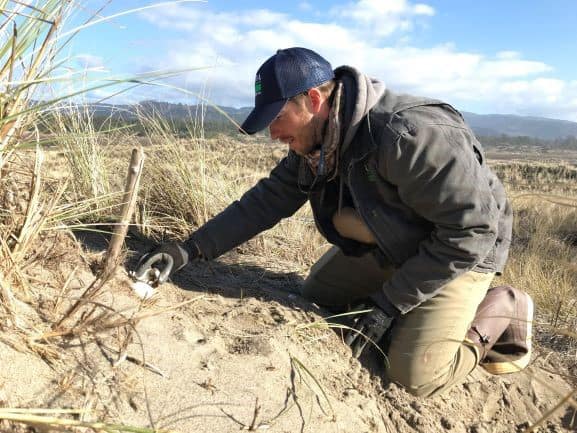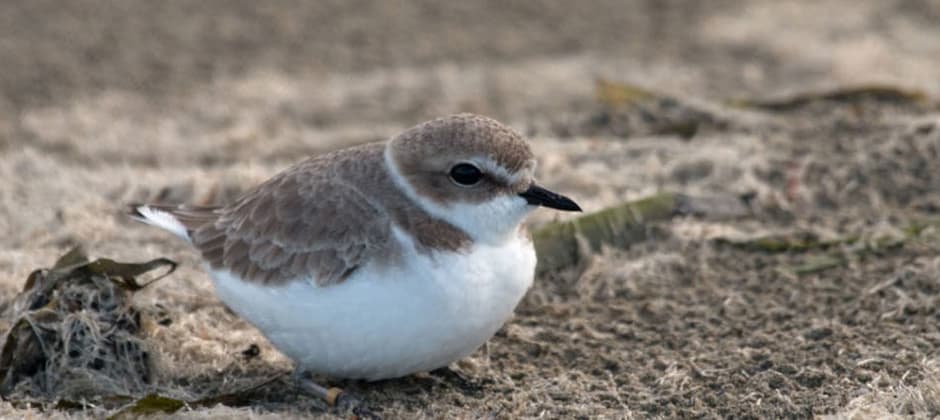Share this article
A banner year for western snowy plover fledglings
The summer of 2019 on the Oregon coast resulted in the second highest number of western snowy plover (Charadrius nivosus nivosus) fledglings in the recovery project’s history. Portland State University biologists note the confirmed 323 fledglings does not include fledglings from unsampled or unbanded broods, likely making the total even higher.
Three Wildlife Services specialists plan and conduct predator management for eight nesting areas in Coos and Curry Counties. WS collaborates on this project with local, state and federal agencies including the US Fish and Wildlife Service, Curry County and Portland State University’s Oregon Biodiversity Information Center. They conduct predator management on lands operated by the U.S. Forest Service, Bureau of Land Management, Army Corps of Engineers and Oregon Parks and Recreation Department.
WS-Oregon works annually from February through August protecting snowy plovers on dozens of miles of isolated beaches, often under challenging and highly variable weather conditions. Due to favorable surrounding habitat and overall remoteness, these areas tend to have high concentrations of predators, particularly corvids and canids.
In the 1990s and early 2000s, prior to WS involvement, adult plovers in the project area were estimated at around 100 individuals and fledglings ranged annually from 30 to 50. In 2019, the adult plover population within the project area was estimated at over 500, with the number of fledglings increasing to over 300. The rate of fledglings per male also improved after implementing predator management. Prior to 2002 it stood well below one fledging per male at six of eight nesting sites. Currently the rate is above or near one fledgling per male at seven of eight sites.

Wildlife specialist Andrew Partin sets equipment to trap a raven. ©Wildlife Services
In 2019, WS lethally removed 314 predators exhibiting focused attention on plover adults, eggs or chicks. The majority of lethal control involved common ravens (Corvus corax) and American crows (Corvus brachyrhynchos). WS also non-lethally hazed a total of 1,076 ravens and crows and collected dozens of blood and fur samples from mammalian predators for disease monitoring.
WS is also collaborating with the National Wildlife Research Center to install purple martin (Progne subis) and tree swallow (Tachycineta bicolor) nest boxes at several plover sites with hopes of mitigating raptor predation. Swallows defend their nests vigorously and often harass and disperse raptors. By attracting nesting swallows to plover recovery sites, WS hopes that while defending their own nests, swallows will inadvertently defend plover nests too. With several boxes already installed and occupied, casual observation saw this behavior occurring. WS hopes to expand the project in coming years and develop a protocol for conducting a scientific study.
Managing habitat, recreation, and predators are all important in recovering Western snowy plovers and the role WS plays has contributed to this project’s success.
Header Image:
Last summer saw on the second highest number of western snowy plover fledglings in the history of the Oregon coast recovery project. Both adult and fledling numbers have been on the rise.
©U.S. Fish and Wildlife Service,/br>








